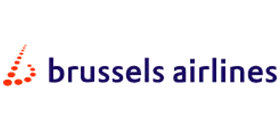 Brussels Airlines Expands East African Network with New Kilimanjaro Route from June 2026
Brussels Airlines Expands East African Network with New Kilimanjaro Route from June 2026
In a strategic move that underscores the growing significance of East Africa for international carriers, Brussels Airlines will introduce a new direct service between Brussels and Kilimanjaro beginning 3 June 2026. This addition, featuring twice-weekly flights, is set to enhance air access to Tanzania and further strengthen the airline’s enduring relationship with the African continent.
The launch of this new route comes at a time when demand for accessible and reliable connections to Africa’s tourism and business hubs continues to rise. By targeting Kilimanjaro International Airport, Brussels Airlines is positioning itself at the gateway to some of Tanzania’s most iconic destinations, including the world-renowned Mount Kilimanjaro, the Serengeti, and Ngorongoro Crater. This development is expected to open new opportunities for both leisure and business travel, while offering African partners enhanced options for inbound and outbound journeys.
Brussels Airlines’ latest expansion aligns with a broader industry trend of European carriers reinforcing their presence in key African markets. For the African travel sector, this route brings substantial benefits: increased seat capacity, improved flight scheduling, and more competitive fares. Tanzanian tour operators, hoteliers, and ground handlers stand to gain from the influx of European visitors, many of whom are seeking adventure tourism, wildlife safaris, and cultural experiences unique to the region.
Twice-weekly flights will provide a steady link between Brussels, a major European hub, and Kilimanjaro, allowing smoother connections for travelers from across Europe, North America, and beyond. This is particularly important for African businesses and tourism professionals seeking to attract visitors from long-haul markets with efficient itineraries and minimized layovers. Enhanced connectivity can also stimulate bilateral trade, investment, and collaboration between Tanzania and the European Union.
For Brussels Airlines, the Kilimanjaro route not only consolidates its historic African network—one of the most extensive among European carriers—but also demonstrates its long-term commitment to the continent. The airline is known for its strategic focus on Africa, with a portfolio of routes that connect European travelers to both mainstream and less-served destinations across sub-Saharan Africa.
The timing of the new service is well-calibrated to serve peak travel seasons, catering to safari-goers, hiking enthusiasts, and those attending conferences or events in Tanzania’s booming tourism sector. The direct flights are expected to make the region even more attractive to group tours and high-value individual travelers, amplifying the appeal of Tanzania’s northern circuit for both luxury and mid-market segments.
As African travel businesses look ahead, the arrival of Brussels Airlines in Kilimanjaro presents a timely opportunity to forge new partnerships, develop joint marketing campaigns, and create seamless travel products that link European source markets with Tanzanian experiences. The move also invites a rethinking of regional connectivity, as stakeholders consider multi-destination packages that combine Kilimanjaro with Zanzibar, Arusha, or neighboring countries for extended itineraries.
With the new route, African tourism professionals are encouraged to leverage Brussels Airlines’ established distribution channels and brand recognition. The airline’s continued investment in Africa sends a positive message about the resilience and growth prospects of the continent’s aviation and tourism sectors, especially as international travel demand rebounds and evolves.
Ultimately, the introduction of direct flights to Kilimanjaro is more than just a new route—it's a catalyst for increased business, cultural exchange, and visibility for Tanzania on the global stage. The African industry should seize this momentum to drive innovation, enhance service standards, and position East Africa as a preferred destination for international travelers well into the future.
